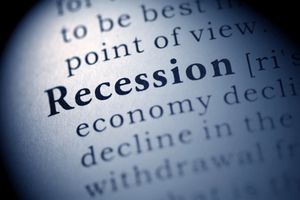Strategies for Financial Recovery Following a Car Accident
The National Safety Council estimates that approximately 44,762 people died and 5.1 million more sought medical attention for injuries sustained in 3,500,000 motor vehicle crashes in the United States in 2023. Approximately 9,600,000 crashes caused non-disabling injuries and property damage.
Individuals who survive a car accident and families who survive loved ones lost to traffic incidents often need financial help afterward. They experience extreme financial losses because of temporary and permanent disability, medical expenses, individual, caregiver and decedent lost work and wages, decreased business revenues, administrative costs, vehicle repair or replacement, and property damage. The NSC estimates that car accidents cost Americans and others roughly $514 billion in financial losses that year.
This guide covers important steps everyone should take to guarantee they can recover financially and receive appropriate compensation for all their losses. Read on to learn more...
Before a Motor Vehicle Accident
Before an inevitable accident ever occurs, a driver should make certain they have the right level of auto insurance coverage. Depending on their state, they need liability coverage for medical and property, comprehensive coverage for non-collision accidents, and an uninsured/underinsured motorist plan. They also need to keep up with their premiums.
Many car owners pay a late fee. During a late payment period, they technically don't have coverage. They should read their policies thoroughly. Additionally, they should keep their vehicle well-maintained and follow all traffic safety rules. These actions can help protect them from claims of liability after a crash.
Immediately After a Traffic Accident
Whenever possible, a driver needs to acquire the contact, insurance and vehicle details of any other drivers involved and the names and contact details of witnesses. A driver or their passengers, if applicable, should also gather evidence after they call emergency services and their insurance carrier. For example, they should take photos or record a video of everything, including damages, traffic lights and cameras, intersections, roads and witnesses. If the police talk to witnesses, they should attempt to record those statements as well.
A driver and their passengers should never refuse to share contact information; argue or disagree with anyone on the scene; explain to anyone other than paramedics, police or their insurer why they think the accident happened; or sign any statements offered by the other party or parties that might suggest liability or a side financial agreement.
Depending on state traffic rules, the driver must also contact their state's Department of Motor Vehicles within a specific number of days to report any injuries or damage that exceeds a predetermined amount. If they fail to do so, they might lose their license.
Long-Term Post-Accident Financial Relief
Many drivers receive an appropriate level of financial compensation for their losses through their insurer or the other party's carrier. The insurer who pays for the bill depends on the outcome of an investigation by police and insurance adjusters and inspectors. Courts must also sometimes become involved in the case.
In some states, one party is considered primarily "at fault," or both parties share the liability. In the first scenario, the at-fault party's insurance covers the damages. With the latter comparative negligence or shared liability scenario, a percentage of fault is assigned to each party, and then each insurer covers the opposite party's losses. In states with "no-fault" rules, all drivers must pay premiums toward personal injury protection coverage (PIP) that covers them no matter who caused the accident.
Of course, legal claims also occur because sometimes drivers or insurers refuse to accept blame. In those cases, an injured driver, passenger or a surviving loved one should contact a car accident or personal injury attorney who can help them file a personal injury or other lawsuit. It is important to find out the statute of limitations on filing a claim after an accident. For example, in Oklahoma you have two years after the accident to file a claim so do not delay in contacting an attorney. They can provide the victims with important information about their rights and options. They can even help them with gathering evidence for their case and advocate for them in an out-of-court settlement meeting.
Community-Level Financial Recovery Strategies
Lastly, all the steps a driver, passenger or other survivor must perform to acquire financial support after a serious car accident take time. Insurance carriers and lawyers sometimes need weeks or longer to complete their investigations, file paperwork and perform other necessary actions. Car accident survivors, especially those with permanent injuries and disabilities, can turn to government programs like social security disability insurance and Medicaid if they don't have enough financial or medical coverage. That said, these programs often don't provide overnight relief.
Many communities have emergency financial hardship funds available through non-profit and other organizations to provide monetary aid for housing, utilities, groceries, healthcare and other bills. Some places have food pantries and offer clothing, counseling and employment support. Outreach organizations and local churches usually offer one-time relief programs. Websites like 211.org and FindHelp.org can give a survivor access to resource referrals based on their location.
Media Contact
Company Name: Web Success Media
Contact Person: Liviu Marcus
Email: Send Email
Country: United States
Website: https://websuccessmedia.com/
More News
View More




Recent Quotes
View More
Quotes delayed at least 20 minutes.
By accessing this page, you agree to the Privacy Policy and Terms Of Service.